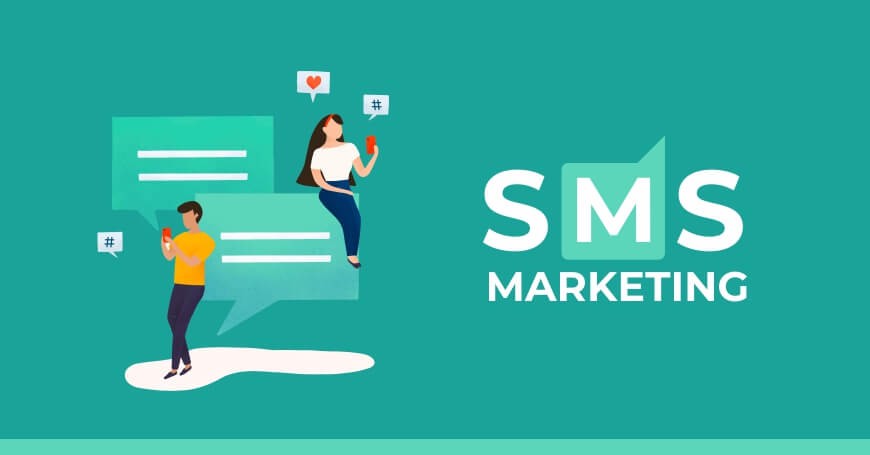As a business owner or marketing professional, you want to ensure that your advertising strategies generate a positive ROI. After all, marketing campaigns can be costly and time-consuming. The wrong approach will adversely impact your cash flow, making it difficult to attract more customers in the future.
To limit the risk of spending money on an ineffective advertising campaign, you must stay abreast of changes in digital marketing, including updates to search engines, operating systems, and social media.
One recent change impacting companies that use SMS messages for promotional advertising is Apple’s latest iOS 16 release. The update introduces changes to how Apple users receive texts — specifically, promotional ones.
Introducing the iOS 16 SMS Promotional Folder
The iOS 16 release incorporates a new folder that essentially filters out promotional messages into a particular location that users can access. Promotional texts sent to iPhone users will go directly to the folder unless the user takes specific action to ensure they receive the texts in their primary SMS inbox.
The iOS 16 SMS promotional folder is similar to Gmail’s separate inbox tabs. Gmail accounts divert incoming emails into Primary, Promotions, and Social tabs. All promotional emails sent to a Gmail user go straight to Promotions unless the user has indicated they want to see messages from that sender in their Primary inbox.
While the iOS 16 SMS promotional folder is a win for consumers overwhelmed by promotional SMS text messages, it is a challenge for companies that rely on SMS text messages as part of their advertising strategy.
These companies must take additional action to ensure customers receive their messages. Otherwise, the customer may never see the content.
Why Apple Created the iOS 16 SMS Promotional Folder
Apple has been on a data privacy streak in recent years. In late 2021, it introduced Apple Mail Privacy Protection. This option allows consumers to protect their data from senders whenever they open an email through the Apple Mail app.
The introduction of Apple Mail Privacy Protection was detrimental to email marketers since they could no longer validate whether an Apple Mail user opened or read their emails. Now, the only way marketers can verify whether a recipient takes action is if the consumer clicks on a link directly provided in the email.
We can assume that Apple created the iOS 16 SMS promotional folder for reasons similar to Apple Mail Privacy Protection. It simply wants to protect its reputation as a privacy-first company that respects consumers’ wishes to avoid overwhelming marketing messages.
That’s a great story for most consumers, but marketers will need to find new ways to ensure that their texts don’t slide into the dustbin of the iOS 16 SMS promotional folder. Otherwise, they may find their SMS text message campaigns aren’t quite so successful anymore.
How to Keep Your Texts from Falling into the iOS 16 SMS Promotional Folder
There are several ways marketers can proactively encourage subscribers to accept their texts, preventing them from going straight to the promotional folder. Here are a few ideas to consider.

Ask Your Subscribers to Save Your Number
The best way to protect your texts from Apple’s promotional folder is by asking your customers to save your contact information. If you use a 10-digit long code phone number, this method will work 100% of the time.
All your subscriber needs to do is click on your contact info at the top of your message, then create a new contact. They can insert your company name into the contact information so that they’ll know exactly who the text message is from.
They can also enter your contact number manually into their address book.
Once a customer saves your number in their iPhone, they’ll receive all your texts, whether they’re promotional or not. Your SMS messages won’t go to the promotional folder since the customer has saved you as a contact.
To convince SMS subscribers to save your contact information on their phones, use social media, email, or even an SMS describing the changes due to the iOS 16 release.
You don’t need to be overly technical (which will likely bore your subscribers). Instead, alert them that it will be difficult to see your texts unless they save you as a contact. Tell them what they’ll miss — great promotions, discounts, and informational material.
Consumers who value your company and genuinely like receiving notifications will add you to their contact lists.
Ensure Your Opt-In Abides by Industry Best Practices
Any business that uses SMS text messages to communicate with its clients must abide by industry best practices and local regulations.
Businesses can’t use SMS messages to communicate with customers who have not expressly opted in to receive them. In practice, all companies must use standard principles to ensure they have full consent from their subscribers.
A subscriber must provide written consent to receive SMS messages from an organization. A simple form that contains your customer’s full name and telephone number, along with information about your company’s SMS text messaging practices, is enough to satisfy regulations in most cases.
Many companies obtain consent through their websites. They should list the purpose of their SMS campaigns and what types of content the subscriber will receive.
It’s advisable to send a welcome SMS message that notifies the subscriber that they’re now on your messaging list and allows them to opt out if they prefer not to receive notifications. The process for opting out should be clear and straightforward, such as responding “STOP” to an SMS message.
Abiding by the best practices and regulations for SMS text messaging reduces the risk that providers will filter out messages or send them to the spam filter.
Ensure Customers Understand What They’ll Receive
Customers expect you to explain what your SMS messages will contain. Your opt-in form and your initial welcome SMS text message should clearly outline what type of content you’ll send.
For instance, if you own an e-commerce store that sells leisure clothing, explain that your SMS messages will relate to sales or discounts on merchandise. Customers who order clothing through your store will also receive purchase confirmations and shipping information.
A physician’s office that uses SMS marketing to schedule and confirm appointments would indicate the purpose in its welcome text and allow the patient to opt out of future SMS communications.
Clients who know what to expect are less likely to opt out of your messages, use a spam filter to remove them, or express unhappiness with receiving your content. Telecommunications providers will see you as a legitimate enterprise that abides by the appropriate regulations, so they’re less likely to filter out messages from your organization.
Avoid Spammy Phrases in SMS Messages
Some specific phrases increase your risk of landing in the spam filter of a telecommunications provider. Words like “Get money now,” “Get rich quick,” and terms related to specific industries such as pornography, CBD, marijuana, guns, alcohol, and pharmaceuticals will quickly raise red flags.
If your organization sells firearms, CBD products, marijuana, or other items subject to age-gating restrictions, you’ll have to be careful not to violate regulations. It’s essential to review current rules to ensure that you’re not breaking the law or running afoul of SMS best practices.
Businesses that use spammy messaging or appear to break the law will find their messages in the spam filter. Telecommunications providers will sometimes ban the number from sending SMS texts.
Add Value to Your Subscribers
Consumers are overwhelmed with advertising, and many are growing increasingly tired of promotional emails and texts. If your SMS messages don’t benefit your subscribers, they’ll likely opt out of your SMS messaging list.
To ensure that your SMS messages don’t get lost in the shuffle of your competitors, you’ll need to add value to the subscribers who want to hear from you. Consider your audience, and find content relevant to their needs and wants.
That doesn’t mean you need to advertise a new sale every week or offer regular discounts. Share content that’s relevant to your brand and your merchandise.
Staying relevant will look different for every business or organization that uses SMS text messages.
For example, a company specializing in financial planning might send occasional SMS messages containing links to blogs about current financial topics, like how a recession impacts investments. A local gym might notify subscribers of a new fitness class.
The more your customers feel that your texts benefit them, the more likely they will add you as a contact, keeping you out of the iOS 16 SMS promotional folder.
Never Purchase Third-Party Advertising Lists
One of the quickest ways to destroy your company’s reputation is by purchasing a third-party list of contacts. The individuals on that list likely have no idea someone sold their information. When they start to receive SMS messages from a company they don’t recognize, they’re more likely to report you as spam to their telecommunications carrier.
If one person reports your company, the telecommunications provider may see it as a mistake. However, suppose multiple customers notify their providers. In that case, you may find that providers begin to filter out messages from you. If that happens, even subscribers who legitimately signed up to receive your SMS texts won’t receive them.
To avoid irreparable harm to your business, never purchase a list of contacts from a third-party provider, no matter how genuine the offer seems. It violates consumer rights and can lead to legal penalties for you and your company.
Avoid Deceptive SMS Texts
Similar to emails, it’s essential not to use deceptive methods to convince consumers to take a specific action. The meaning of your texts should be clear, and you shouldn’t make promises you can’t fulfill.
For example, sending a text that describes a massive, never-before-seen sale at your e-commerce store is likely to raise red flags — especially if you use similar wording in your other SMS texts.
Instead of holding “everything must go” sales every week, scale down on your promotions and use them only at targeted times, such as at the end of a season or during the holidays. Telecommunications providers are more likely to target your texts as spam if your messages constantly advertise flash sales.
You’ll also want to avoid using particular language to avoid spam filters. For example, trying to skate around text messaging rules with phrases like “FR$$ Pr!Ze” will probably lead you to the spam folder.
Monitor Your Analytics
You’ll want to monitor the analytics of your SMS campaigns and update your subscriber list whenever someone opts out of your messages or blocks you. You should also remove subscribers whose phone numbers are invalid.
The more carefully you manage your subscriber list and limit undelivered messages, the more likely that telecommunications providers will see you in a favorable light. You’ll also gain better insights into the performance of your SMS campaigns.
Get Control of Your SMS Texts with Contact Consumers
Organizations who need a streamlined platform to manage their SMS text message campaigns trust Contact Consumers for our reliable and easy-to-use solutions.
Companies launching an A2P 10DLC campaign with Contact Consumers must follow the Messaging Principles and Best Practices created by the Cellular Telecommunications Industry Association’s (CTIA) members.
You should also make sure you carefully follow Contact Consumers’ Principles and Guidelines. Reach out to Contact Consumers today to learn more about our platform.




